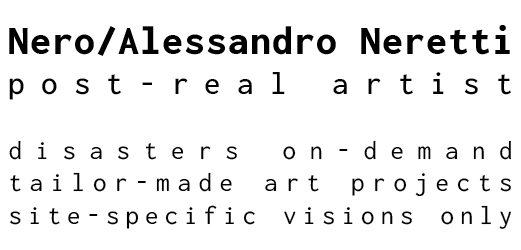CAR = STONE #1
NICARP
Nami Island/ROK
2013
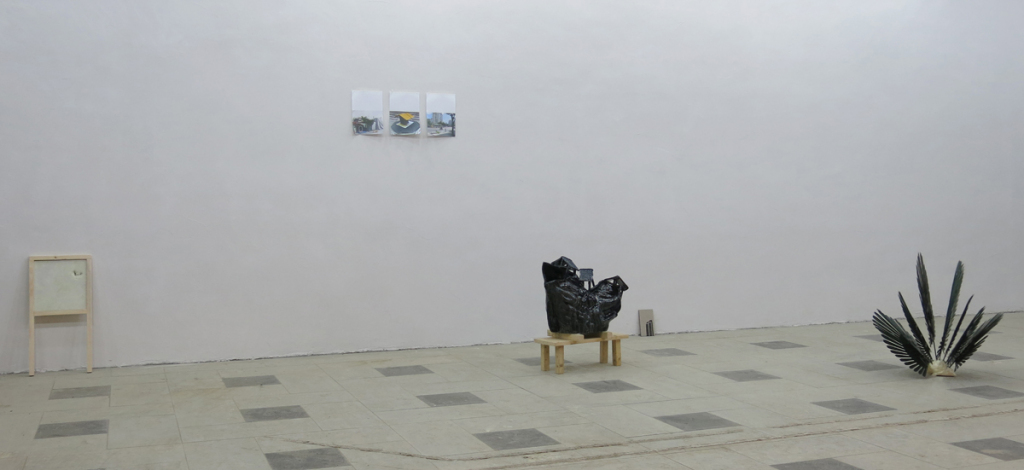
exhibition view | NICARP
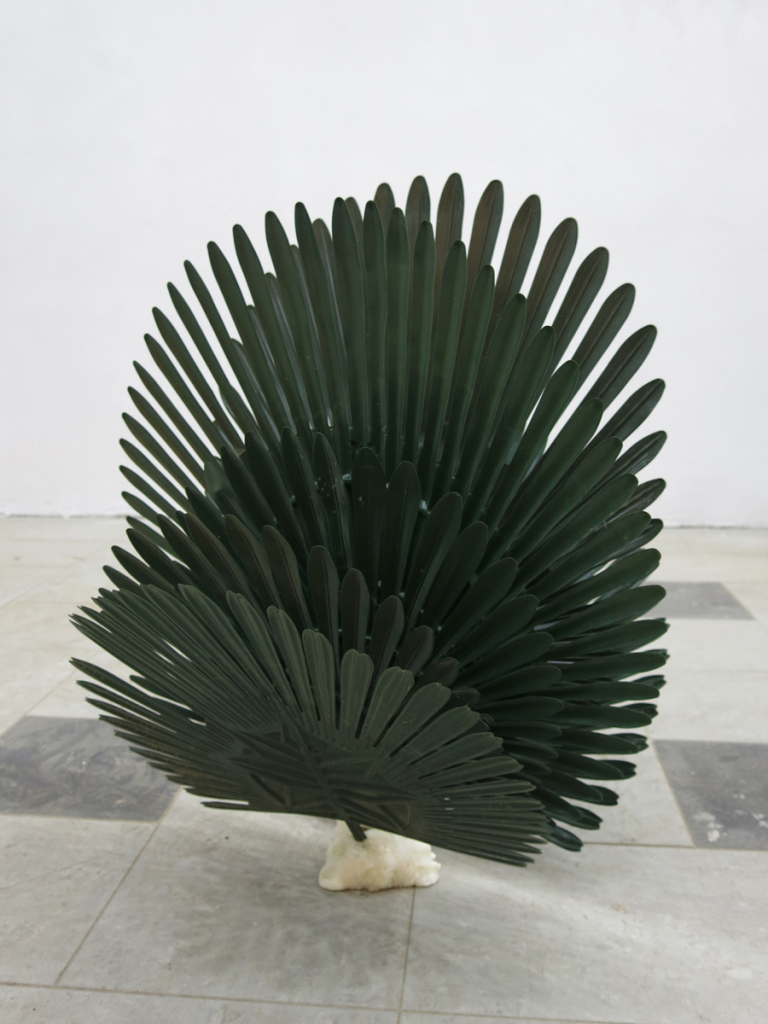
bio diesel from coconut palm, 2013 | polyurethane, plastic palm | cm 73 x 72 x 59
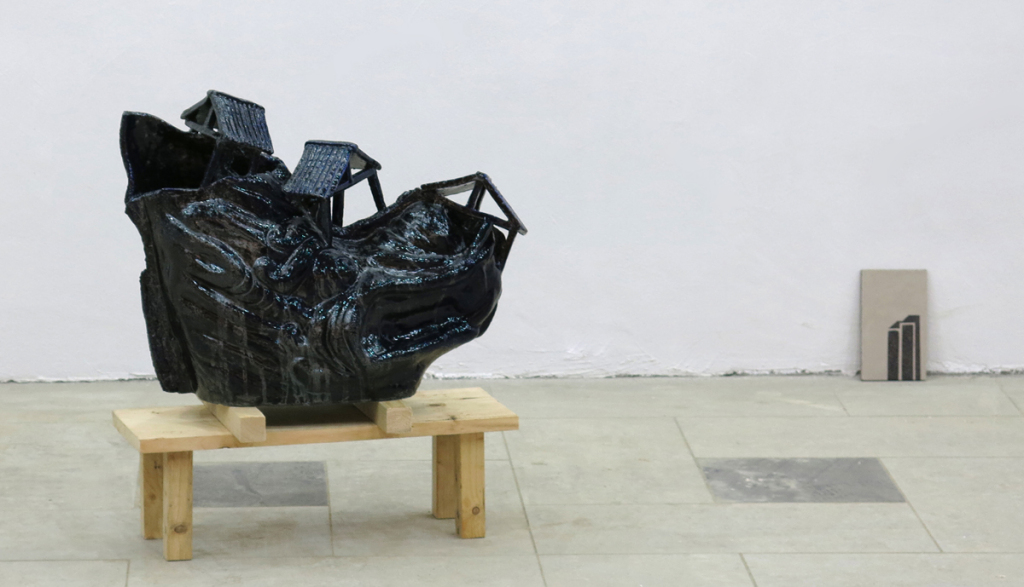
(R) cities ooze heavy metals, 2013 | glazed stoneware, oxides, wood | cm 70 x 63 x 31 | (L) we are the same shadow of the buildings, 2013 | glazed stoneware | cm 12 x 20 x 0,5
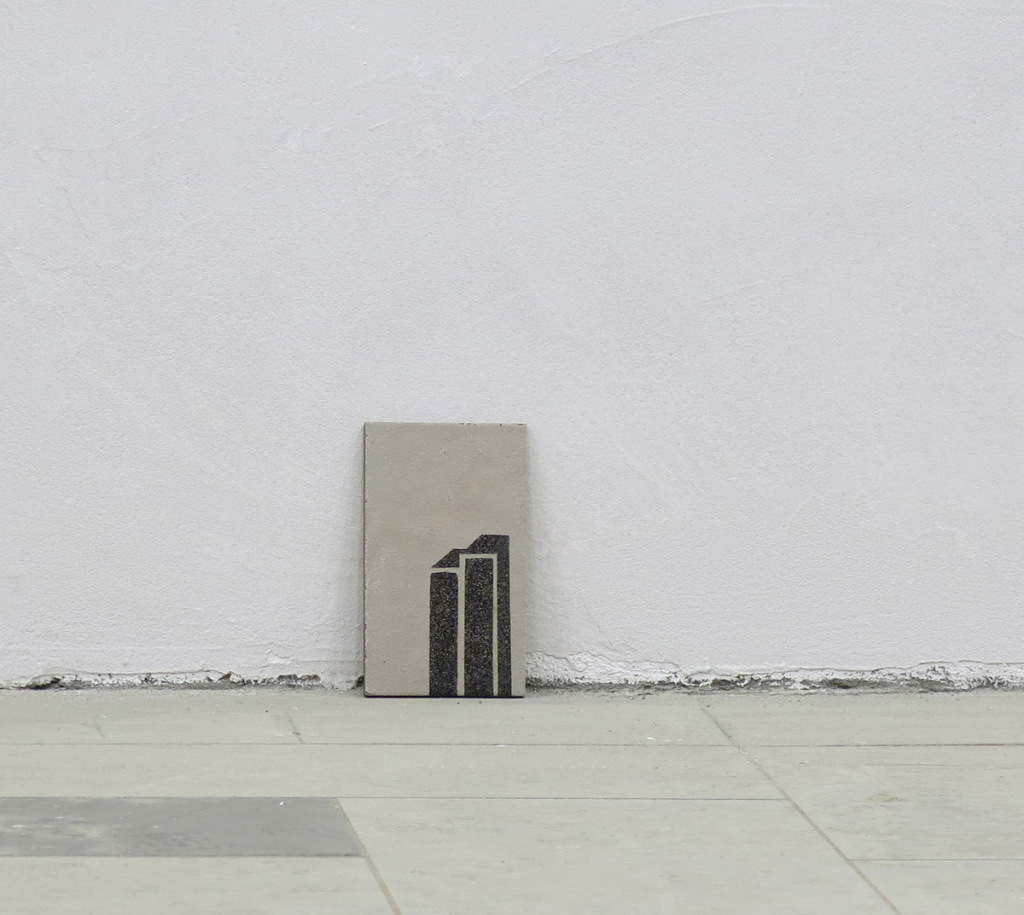
we are the same shadow of the buildings, 2013 | glazed stoneware | cm 12 x 20 x 0,5
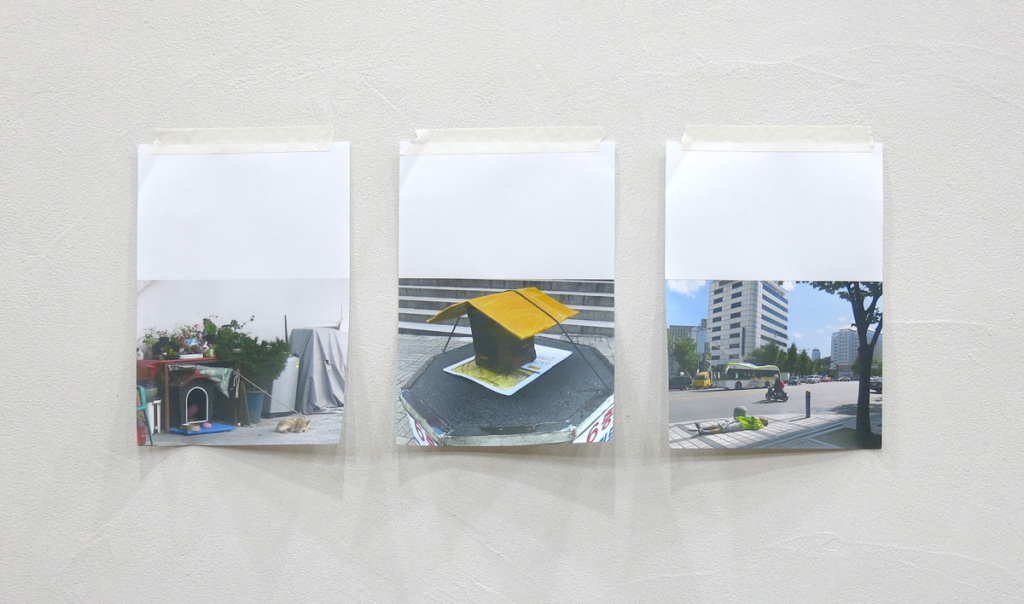
driving school / lessons 1-3, 2013 | inkjet on papaer | each one A4
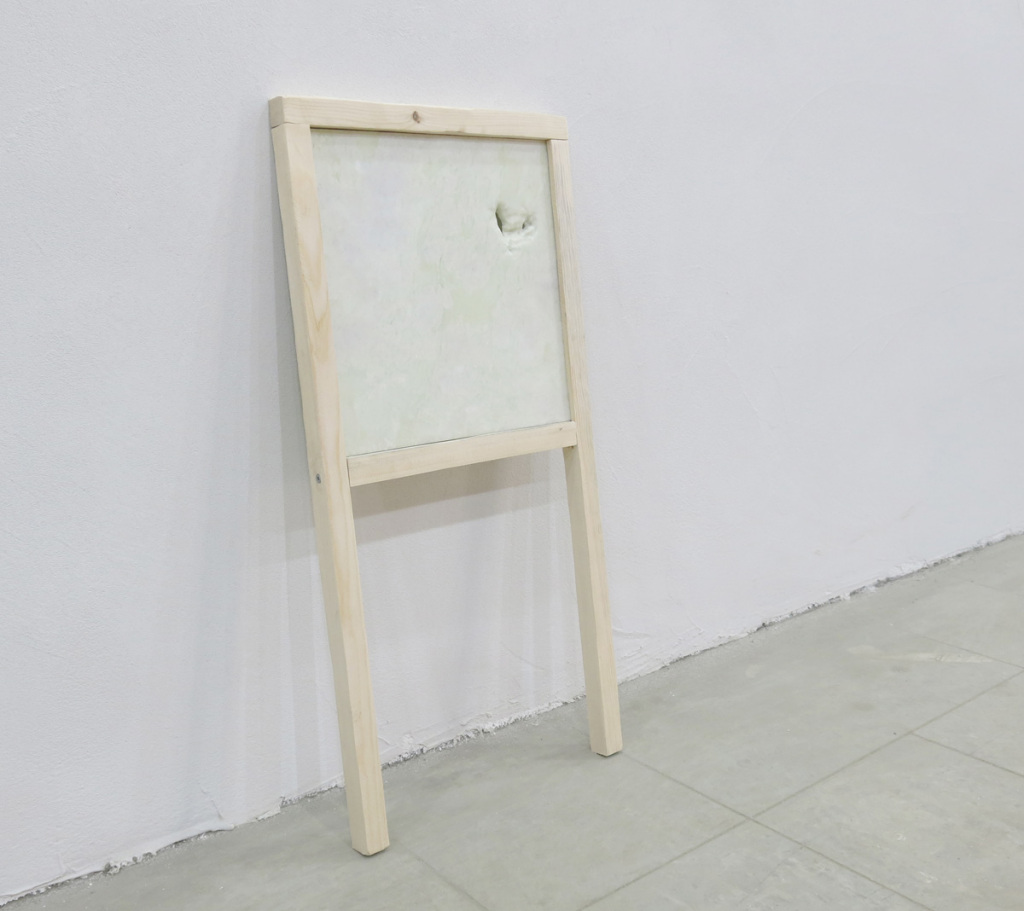
smog addicted, 2013 | marble, wood | cm 71,5 x 35 x 3,5
Nero’s skin.
Anatomy of a process.
Gino Pisapia
The first thing that comes to mind when you mention skin, is certainly human skin, an elastic and resilient peel, a coating, a protective barrier as well as a boundary, a line that separates inside and outside. Skin has not only a protective function but it also reveals your physical and aesthetic condition. Skin mirrors your changing, it is the litmus test of your mood swings.
I think that this metaphor perfectly conveys the essence of Nero’s works.
The issues that Nero explores in his works, have developed in a way that they are always different and up to date. The same applies to his techniques.
Nero’s artistic practice refers to tradition and, since he comes from Faenza – city of art and ceramics -, he is well acquainted to sculpture and drawing related topics, which he has renovated.
For this reason I think that it is interesting to study Nero’s works from 2007 to 2013 whose glossy surfaces function as outer layers, bodies without souls, encasement that discloses only the outer face of things.
The same line was strengthened in the works that were displayed at the exhibition Post-real life or hostage/privilege that took place at Banca di Romagna in Faenza in 2011. That is even more patent in such works as How many seasons we have heard – I am getting old – Fucking Parking – works made for Nero’s latest project in Korea.
I could mention other works, but I think that these suffice to make it clear that the “skin” of Nero’s works is an osmotic surface that can absorb and release his personal temper affected by that moving and exciting “life” that is characteristic of his modus vivendi.
In his artistic practice, by means of a complementary process, Nero shortens the distance of the “world” and of the images that the world creates.
Thought, word, code, language, object, image coincide and are part of a wider plan that amounts to the rational ultraconservative personal line taken by the ones who react to contemporary society by means of shape and colours.
Hence inside and outside the “language” you will not see the traces of settling in life; on the contrary you will detect a conforming and conformed standard behavior that is generated by a global process of evolution.
This attitude rests upon a personal idea that enlarges the boundaries of reality and drives it into a social – anthropological dimension that “plays” with power, politics and economics.
Nero’s works have plenty of hints, references, small inventions, that intersect with a great flow of information, which come into shape by means of the materials and techniques that the artist chooses carefully. His choices condense and try to reveal the social, political, anthropological status of the one who observes critically and, while providing documentary evidence, creates playfully and in a well educated way.
Ceramics according to Nero, i.e. going back to collective imagination
Irene Biolchini
Nero’s work eludes any kind of classification dispassionately. Any attempt of normalizing is even more complicated by Nero’s free use of materials and techniques and equally his shifting constantly from ceramics to photography, from performances to art installation.
Since the time of his very first experiments with ceramics, there are some recurring features that can help the ones who are keen on separating items and on looking for topics that show up regularly.
The ready made content of the early projects gets a new universal meaning in the Korean works.
In DOG’S BONES IN THE HEART (LE OSSA DEL CANE NEL CUORE – 2008) the moulds for ceramics that were found in a dump become a surreal extension of dogs’ sculptures and the heart becomes an actual presence upon one of the dogs’ nose that are the main subject of the series.
In the first works title provided meaning to waste materials, similar is the procedure the artist put into place in the more resent Korean works. In Sisters with Still Warm Skeleton, the sisters the title refers to are clearly represented by the two cylindrical sculptures that are contained in the work. The two sisters, or rather the twin sisters, remind to NY Twin Towers immediately in our collective consciousness. They two been created by sticking together an cient Korean tiles by means of polyurethane foam. By way of the artist’s gesture, our collective imagination blends together with Korean collective culture and with their ancient tradition of tiles (kiwa) used in house building.
Unlike in the first works where the signifier in the title clashed with the meaning of the object trouvè, in Sisters with Still Warm Skeleton the very waste materials become a referent. That represents a community,the Korean one, that is willingly related to one of the most considerable events of the west collective consciousness.
The powerful comparison between the towers, on the one hand, and Korean tradition on the other hand, determined also the choice of exhibit the work Cities ooze heavy metals together with We Are the Same Shadow of the Buildings. Actually these two work have been conceived as a diptych. In the first work the traditional dragon is thoroughly transfigured by being plunged into peroxides (which hints to the effects of increasing pollution), while the second work remind us that building development destroys our tradition and therefore our memory.
Destroying the collective memory is an issue also in other two works made during Nero’s Korean residency (Smog Addicted e CORE KOREA) in which it is represented as destroying materials.
In the first work marble is ruined through scraping off (which warns against some polishing techniques that work by rubbing used to clean classic monuments) in the other work materials are damaged by means of a technical process. In CORE KOREA the clay bodies are coated with slip which caused them to craze and crackle.
Western techniques add to the eastern tradition and transform it. Similarly collective memory of traditional pattern are blended with western icons (the cat of Tom and Jerry cartoons for instance, that appears in the black and white tiles) and with modern buildings in the hills’ outline. Modernity is embodied by mass consumption, cartoon icons, smog, the building industry that breaks into tradition changing that for good (see the ready made tea pots at the foot of the showcase).
Nero’s Korean works display a blend that has already taken place. In his works there is no clash between East and West. You are taken to face a new kind of aesthetics based upon two collective consciousnesses that point to compromising, changeable, outcast topics.
